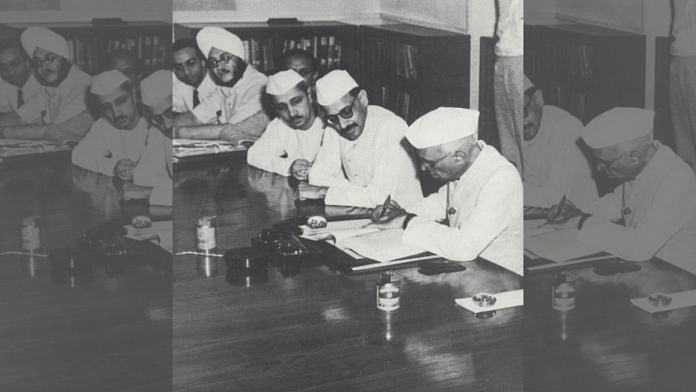Gulzarilal Nanda is often remembered as the shortest-serving interim prime minister of India with two 13-day stints in office, but the freedom fighter and Congress leader was also one of the country’s leading legislators and parliamentarians. Though he was a prominent Congress leader, he opposed the Emergency and later resigned from the party.
Nanda was the Interim Prime Minister after Nehru passed away in 1964, then again after Lal Bahadur Shastri’s death in 1966. On both occasions, the Congress didn’t wait for more than two weeks to bring a replacement.
And not many know that he authored India’s First Five Year Plan.
Nanda was born in 1898 on the 4 July in Sialkot of the Punjab Province (now in Pakistan). His education in economics from Allahabad University influenced his belief in socialism and also his political career. In the freedom movement against the British, which he had joined under the leadership of M.K. Gandhi, he was jailed twice. His role in unifying the labour force was extremely significant. Along with Gandhi as the founder and Anasuyaben Sarabhai as president, Nanda helped set up the Majdoor Mahajan Sangh in Ahmedabad in 1916, India’s oldest union of textile workers.
Thereafter, he found himself in the role of a torchbearer for labour rights in the country and partnered with various organisations that worked towards the cause. As an Indian delegate to the Geneva International Labour Conference in 1947, he visited various European countries that then practised socialism in order to implement the same in a newly independent India. Nanda went on to hold various portfolios in Indian governance after his election into the Lok Sabha in 1957 from the Sabarkantha constituency in Gujarat.
No power lust
After Jawaharlal Nehru’s death in 1964, India attracted international scrutiny — the world wanted to see if the country could, in fact, sustain a democracy with Nehru’s ideology. Moreover, coming out of a very recent war with China, Nanda’s temporary leadership of the country came at a very important juncture in India’s history. India was moving towards severe food crises, volatile politics, and still trying to find its feet. Thirteen days later, Lal Bahadur Shastri replaced him.
History repeated itself in 1966, with the death of Shastri. This time though, Nanda was encouraged by members of the Indian Cabinet to retain the position as the PM, but he was reluctant, for he did not want to allow himself to be part of a power game, said his daughter Pushpa Nayak in a 1996 interview with India Today.
His limited period in office both times prevented him from being able to make any lasting changes in the fabric of the nation, yet he remained extremely vocal on his stance against corruption. As a devout Hindu, Nanda wanted the slaughter of cows to be banned in India but refused to speak in Parliament on the topic — his strong views on the subject coloured his judgement. The decision was passed to Prime Minister Indira Gandhi. A riot broke out in the streets outside the Parliament House, and the rioters who were seemingly Hindu monks entered the premises as well as the house of a Congress leader. Later, it was found that it was orchestrated by the people who had an issue with his attitude towards corruption and were concerned about his election victory as the home minister.
Also read: Kailash Nath Katju rose from office to office ‘waging a war’. For him, India came first
Rigid in principle
Gulzarilal Nanda was known for his principled personality — he once reprimanded his young grandson for using official stationery to draw a sketch. Living by his socialist ideology, he denounced the ideas propagated by capitalism.
Nanda did not own any private property, and despite his refusal, was forced to accept Rs 500 as a freedom fighter’s pension. Another incident records that he was evicted from his rented house in New Delhi’s Defence Colony for non-payment of rent, after which he moved to Ahmedabad to live with his daughter.
He distanced himself from any kind of materialist desires. While it gained him a lot of respect among his peers, it is argued that it led to his ‘downfall’ as a leader.
The Congress was quick to replace him in 1964. He wasn’t considered ideal to take over Nehru, who, though shared similar philosophies, was a more diplomatic leader. Nanda’s anti-corruption stance remained unhinged, a trait that is hardly considered expedient in politics. And he became the target of the ire of many Congress members.
Gulzarilal Nanda died in 1998, months before his 100th birthday. He received the Bharat Ratna and the Padma Vibhushan not long before his death. Today, his socialist legacy has scarcely been maintained, with India becoming a player in the global market. What he stood for in terms of labour rights and anti-corruption hasn’t been paid much attention to.
The Prime Ministers’ Museum that opened in Delhi on B.R. Ambedkar’s birth anniversary this year remains the only national tribute to Gulzarilal Nanda.
(Edited by Humra Laeeq)



